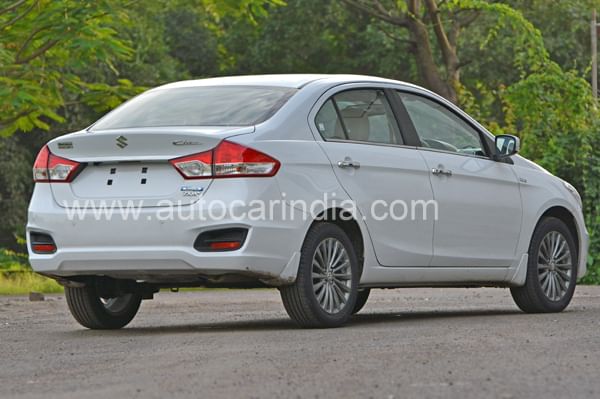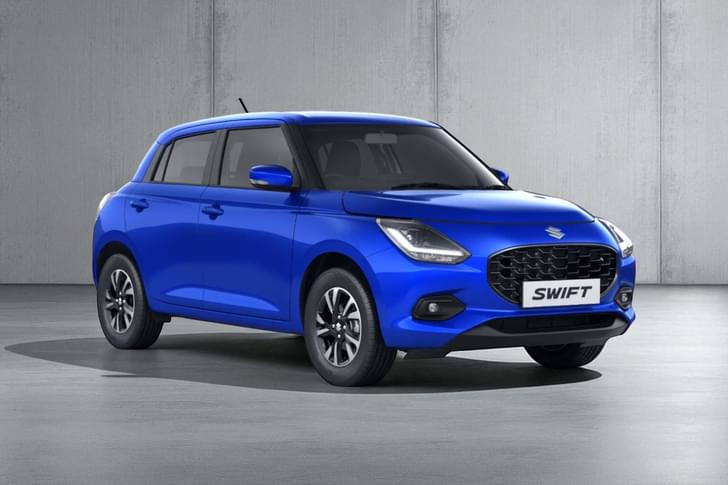What is it?
It's been almost a year since Maruti launched its genuine Honda City rival, the Maruti Ciaz, in our market. Right from the word go, the Ciaz had it all in order – the looks, competent engines, generous rear legroom and a long list of features – to beat the segment leader. The Ciaz has even managed to dethrone the City’s closest rival, the Verna, and take the second spot in overall sales segment since its launch, but has struggled a bit to find more buyers than the City.
Also, in terms of fuel efficiency, the City diesel has an ARAI-claimed 26kpl while the Ciaz diesel closes in with a 26.21kpl figure. In a quest to up the kpl game and to improve sales numbers, Maruti will soon bring a mild-hybrid version of the Ciaz diesel to our market. Dubbed the Ciaz SHVS, this Ciaz diesel gets a package of fuel-saving tech which helps it deliver an ARAI-claimed figure of 28.09 kpl. That's 1.88kpl more than the non-SHVS Ciaz and 2.09kpl more than the City diesel. We got behind the wheel of the new Ciaz SHVS for a quick spin to find out where the differences lie.

On the exterior, the Ciaz SHVS looks exactly like the standard car, save for the new 'SHVS' badging on the boot. The variant nomenclature for the Ciaz SHVS also carries forward with similar equipment as the non-hybrid car. The interiors too are similar to its predecessor; the simple, uncluttered dashboard, and the easy to read dials are still in there. Speaking of the dials, the Ciaz SHVS does get additional indicators. More on that later.
What is it like to drive?
As part of the 'Smart Hybrid Vehicle by Suzuki' (SHVS) upgrade, the Ciaz gets what Maruti calls an ISG (Integrated Starter Generator). The Ciaz SHVS comes with a segment-first dedicated start-stop system which can be brought into action with the press of a button located to the right of the steering wheel, beside the switch for the parking sensors and fog lamps. This system is similar to the one seen on the Micro-Hybrid Mahindra vehicles and quite a few high-end cars in our market. It comes in to play by shutting down the engine when the car comes to a complete halt and deactivates itself when the driver presses the clutch and allows the engine to restart. We found this system being activated approximately within four to five seconds of the vehicle being brought to a complete stop. There’s a dedicated sign on the instrument panel that glows when this system is active. As per the company claim, the system is said to deactivate itself if the driver unfastens his seat belt or if the driver’s door is opened.
The Ciaz SHVS also gets a Deceleration Energy Regenerating function. This comes into effect when the vehicle is being decelerated. Basically, what it does is that it “feeds” the energy back into the vehicle's electrical system during deceleration in order to further improve efficiency. A green-coloured SHVS indicator placed right at the centre of the instrument cluster lights up when this system is running. We found the SHVS light coming on only if the vehicle was being decelerated from a speed of approximately over 30kph. In order to let this system function, the driver has to ensure the vehicle isn't in neutral while decelerating and the driver’s foot is off the clutch pedal.

The third function seen in the Maruti Ciaz SHVS is the Engine Power Assist function which according to the carmaker, assists the engine power as a motor when the vehicle is running. There is even a gearshift indicator provided in the Ciaz SHVS to prompt drivers to change gears at the most ideal gear times – a feature seen in most modern-day Hyundai’s.

The Ciaz SHVS diesel retains the 89bhp 1.3-litre Fiat-sourced engine, which was already tuned for better performance than in the Ertiga, thanks to the recalibrated ECU. The turbo still takes a while to spool up, but once active, the Ciaz feels far from sluggish in city driving. Apart from the added fuel-saving tech, we found the Ciaz diesel SHVS’ driving characteristics to be quite similar to the non-SHVS diesel Ciaz.
Should I buy one?
To differentiate itself from the already overcrowded mid-size sedan market, Maruti has thrown in lot of tech to improve fuel efficiency. Features like Deceleration Energy Regeneration and start-stop system promise to appeal to our kpl-conscious market. However, we will reserve our judgment until we actually put it through our rigorous fuel-efficiency test. But for now, on paper, the Ciaz SHVS will definitely attract more customers to this already popular vehicle. Maruti has priced the Ciaz a little cheaper than the outgoing non-hybrid version, thanks to the FAME scheme by the government of India. The Ciaz SHVS Diesel Hybrid is now priced from Rs 8.23 lakh (Ex-showroom, Delhi).
Maruti Ciaz SHVS Diesel prices: (Ex-showroom, Delhi)
VDi 8.23 lakh
VDi(O) 8.37 lakh
VDi+ 8.81 lakh
ZDi 9.52 lakh
ZDi+ 10.17 lakh
















































